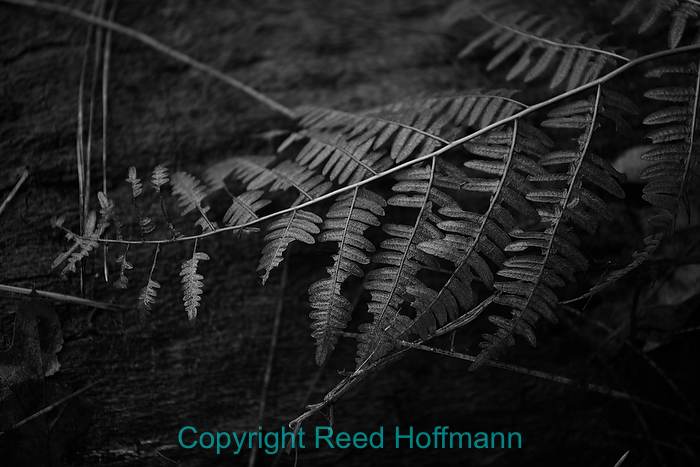Almost every year I teach a Nikon School in Berkeley. There are some places on earth that have more than their fair share of beauty, and the Bay area is one of them. Point Lobos, Muir Woods, The Golden Gate Bridge, and on and on – the area doesn’t lack for photo appeal. However, any time I have a trip there, I always wonder if I can make the time to run out to Yosemite. And this time I did.
I’ve been lucky enough to visit Yosemite many times. In my opinion, Yosemite Valley is one of the best places to go where you’ll find an amazing number of photos opportunities in one small area. Having been there before, though, means that when I go now, I try to find new ways to photograph it. Recently I was reading an article about photographers who
shoot black and white, and conversations with them about how it’s different than color. And that prompted me to do the same. I was taking a Nikon D800 and the new D5200. I needed to shoot examples with the D5200, so that would be set to color. With the D800, though, I went into the Picture Control menu and set it to monochrome. In the past, I would have worried that I might miss out on a great color photo doing this. But not any more, because now I shoot in RAW format.
If you set your camera to RAW (instead of JPEG), you’re recording the image data that the sensor captures when you shoot a picture. Just the data, not a processed image file (which is what a JPEG is). That means it hasn’t been processed for color, contrast, saturation, hue, sharpening, noise, etc. Which also means that although I’ve set the camera to shoot monochrome, the fact that it’s capturing RAW data means I can always choose later to see it in color instead.
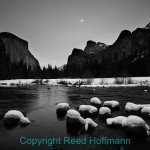
First evening, long exposure on tripod with the Merced River in the foreground, using a graduated neutral density filter to darken the sky, moon coming up. Nikon D800, ISO 200, 1/2.5, f/8, -1.0 EV, 16mm. Photo copyright Reed Hoffmann.
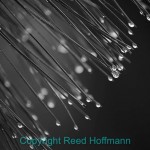
First morning, trying to make the best of the rain. Nikon D800, ISO 200, 1/100, f/4, 0.0 EV, 200mm. Photo copyright Reed Hoffmann.
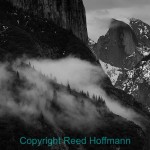
As the day wore on the rain stopped, and we got some nice fog in the valley. Nikon D800, ISO 200, 1/500, f/4.5, 0.0 EV, 200mm. Photo copyright Reed Hoffmann.
But the real advantage to setting the camera to monochrome is to get black and white feedback. While that RAW data is there to work with, the camera also creates a highly compressed full-resolution JPEG at those settings too. That file’s embedded with the RAW data to let the camera show a fast preview of the photo at those settings. And that’s the important part – when I look at the photo on the back of the camera, it shows me a black and white image. The challenge in shooting black and white is in trying to imagine how the different colors in the scene will record in grayscale. Since I’m getting instant feedback of the photo in black and white on the LCD, I can make decisions while I’m shooting based on whether those tones are working for me.
And those Picture Control settings can take me even further. Just like changing the white balance in my camera to change the color in the scene, I can change my Monochrome Picture Control setting for more or less contrast, among other things. If I like the black and white image I’m shooting but it’s flat (low contrast), I can increase that setting in Picture Control to boost it. “Picture Control” is unique to Nikon, but other cameras have similar processing settings you can adjust as well.
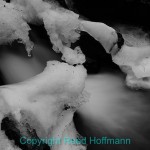
2.5-second exposure, on a tripod, of the stream coming off Bridalveil Falls. Nikon D800, ISO 100, 2.5, f/22, 0.0 EV, 31mm. Photo copyright Reed Hoffmann.
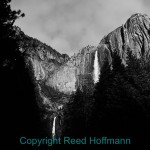
Our second (and last) morning we finally got some sun, which really brought out the contrast in the water and sky. Nikon D800, ISO 200, 1/800, f/8, 0.0 EV, 30mm. Photo copyright Reed Hoffmann.
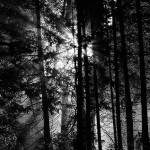
And with the sun and grond fog, we were treated to some great moments in the woods. Nikon D800, ISO 200, 1/1000, f/5.6, 0.0 EV, 52mm. Photo copyright Reed Hoffmann.
There’s one important thing to remember if you do this. Although you’ve changed your camera’s settings to create a black and white image, if you’re shooting RAW, the software on your computer may not see the image as black and white. Remember, your camera manufacturer’s software (Nikon View NX2 and Capture NX2, in my case) will “see” that the camera was set to black and white and show you the image that way. But if you’re using third-party software, like Adobe or Apple, the software won’t understand that and show you the image as color. That’s not necessarily bad, it just means that you need to take the step to change them to black and white in that software. If you shoot in JPEG, they’ll always show up as black and white, but I wouldn’t recommend that. With RAW you capture three channels of color information (Red, Green and Blue) that can be mixed to make a black and white of your choosing. If you shoot JPEG black and white, then you’re just getting one monochrome channel, which will limit what you can do afterwards. And make it impossible to choose color later too.
As we drove into Yosemite at dusk that day, my plan to shoot black and white seemed prescient. It was cloudy and raining, with snow on the ground. That meant not much color, or contrast. Thursday morning was more of the same. But that wasn’t entirely bad. After all, bad weather can make good pictures. And warm weather with snow on the ground means fog, which makes for some beautiful opportunities in the valley.
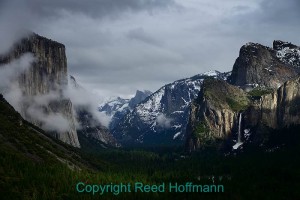
When the sun poked through the clouds to light up Bridalveil Falls, I had to switch to color. Nikon D800, ISO 100, 1/640, f/5.6, 0.0 EV, 52mm. Photo copyright Reed Hoffmann.
Over the next day and a half, it was interesting to see how different the scenes were in black and white as opposed to color. I still did my usual stuff – exposure compensation, adjusting ISO based on light and shutter speed, using graduated neutral density filters to even out range of light issues. But black and white had me thinking more about the graphic element of the scenes in front of me, how lines and shapes and tones interacted and the how the contrast (or lack of it) changed the image I was capturing. Without color, I returned to my roots as a beginning photographer, when I only shot and printed black and white. Back to the basics, where content was king, without the distraction of color.
There are times, of course, when color is essential to a picture. Late the afternoon of the second day, the clouds looked like they might break a bit and let some sun through. With a few bands of fog still drifting through the valley, we headed to Tunnel View, the

And again when ice crystals in the air formed a colorful halo around the moon, I changed to color. This is five exposures combined in HDR Express by Unified Color. Nikon D800, ISO 200, 1/2, f/5.6, 0.0 EV, 24mm. Photo copyright Reed Hoffmann.
classic viewpoint. And we were blessed with a few beams of sun spotlighting Bridalveil Falls, and also a weak rainbow briefly in the center of the valley. That’s one of the few times I switched the D800 over to color. I wanted to see the greens of the trees against the grey granite of the sunlit rock faces and the bluish cast of the hills. And I wanted to try to capture that rainbow. It was weak, but with a little help from a polarizing filter, it’s visible. Later that night we shot the valley under moonlight, and as dramatic as the black and white photos were, I again switched to color capture the rainbow halo around the moon.
It was a great two days, and shooting black and white was a fun exercise, which brought back many good memories. But its greatest value was in giving me a focus for the trip, a reason to think more about what I was doing. Photography gives us an almost endless variety of choices in how we can approach our subjects. Our challenge is to not get in a rut, always shooting the same way. So the next time you head out with your camera over your shoulder, ask yourself, “what can I do different this time?” You may surprise yourself with what happens.

